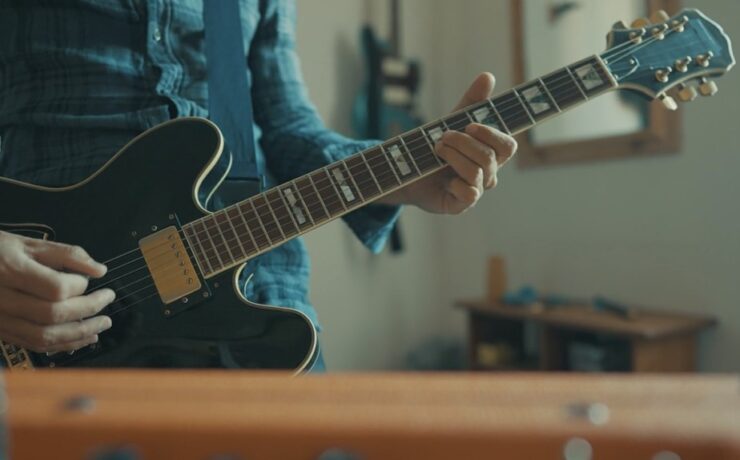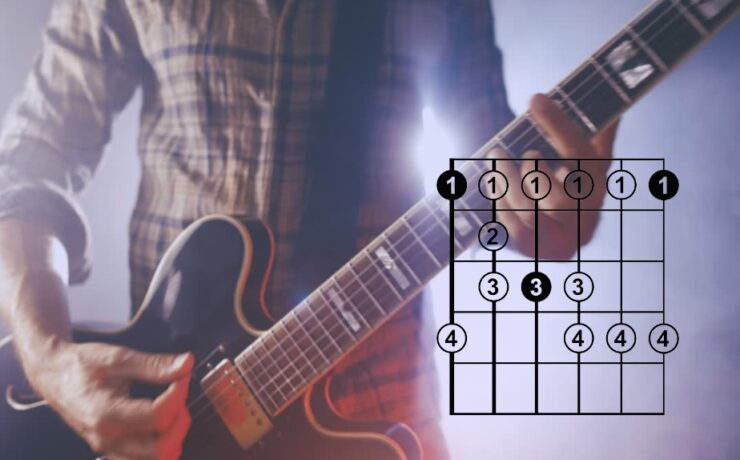Rock music is a genre that has captivated the world for decades with its driving rhythm, powerful riffs, and screaming solos. One of the defining elements of rock music is the guitar, and the scales used by rock guitarists are an important factor in creating that iconic sound. In this article, we will explore the most common scales used by rock guitarists and how they contribute to the unique sound of rock music.
Introduction to Rock Guitar Scales
When it comes to rock guitar, there are a variety of scales that are commonly used. These scales are the foundation of many classic rock songs and are essential for any aspiring rock guitarist to know. In the section below, we will explore the most important scales used in rock music and how they can be used to create powerful riffs and solos.
1. The Major Scale

The major scale is an essential component of rock guitar playing, as it provides a foundation for many other scales used in the genre. This scale has a bright and uplifting sound that is perfect for creating the anthemic rock songs that have become so popular. It is not only used in lead guitar playing but also in rhythm guitar playing to provide a strong harmonic foundation for the music.
To understand the major scale, one must first understand its construction. The scale is built using a specific pattern of whole and half steps, starting with the root note of the scale and moving through seven notes in total.
Once you understand this pattern, you can apply it to any key, making it a versatile and useful tool for rock guitarists. The major scale can be used to create melodic hooks, solos, and even chord progressions, making it a crucial part of any rock guitarist’s repertoire.
2. The Minor Scale
In rock music, the minor scale is just as important as the major scale and is often used to create a darker, more melancholic sound. This scale is particularly well-suited for slow, introspective songs that require a more somber tone. It can be used to create a wide range of moods, from hauntingly beautiful melodies to intense, emotional solos.
Like the major scale, the minor one is constructed using a specific pattern of whole and half steps. This pattern creates a unique sequence of notes that give the minor scale its distinctive sound. In lead guitar playing, particularly in blues-influenced rock music, this scale is used extensively to create expressive, soulful solos.
Understanding the minor scale is crucial for any rock guitarist who wants to add depth and emotion to their playing. With its versatile and evocative sound, a minor scale is an essential tool in the arsenal of any serious rock guitarist.
3. The Blues Scale

In rock and blues music, the blues scale is a staple of lead guitar playing. It is a variation of the minor scale, with the addition of a flattened fifth, which creates a distinctively bluesy sound. The blues scale is a pentatonic scale, meaning it has only five notes, which makes it easy to learn and use in improvisation.
This scale is a versatile tool for rock guitarists, as it can be used to create a wide range of moods and emotions. From slow, soulful ballads to fast-paced, energetic rock songs, it is a powerful tool for expressing yourself on the guitar.
If you’re a rock guitarist looking to add depth and emotion to your playing, learning this scale is essential. With its evocative and expressive sound, the blues scale is a key component of the rock and blues guitarist’s toolbox.
4. The Pentatonic Scale
The pentatonic scale is a great starting point for guitarists looking to begin exploring lead playing. Its simple structure means that it can be learned quickly and easily, making it a popular choice for beginner guitarists in rock and roll music.
Despite its simplicity, this scale is incredibly versatile and can be used to create a wide range of musical moods and emotions, from soulful blues to uplifting rock.
In addition to its versatility, it is also popular among guitarists because it allows for a lot of improvisation. Because this scale only includes five notes, there is plenty of room to experiment and add your own personal touch to your playing.
This makes it a great choice for guitarists who want to develop their own style and sound, as well as for those who want to jam with other musicians and explore different musical ideas.
5. The Dorian Mode
The Dorian mode is a type of minor scale that is commonly used in rock music to create a unique sound. It has a distinct character that sets it apart from other scales, with its mellow, almost jazzy feel.
In rock music, the Dorian mode is often used to create intricate and melodic guitar lines that add depth and complexity to a song. This mode is constructed using a specific pattern of whole and half steps, which is similar to the natural minor scale but with a raised sixth degree.
To play in this mode, guitarists must understand the pattern of whole and half steps that form the scale. In the key of C, for example, the Dorian mode would start on the second note, which is D, and the notes in the scale would be D, E, F, G, A, B, C.
The Dorian mode is a versatile scale that can be used in a variety of different keys, and it is a popular choice for guitarists looking to create a unique and interesting sound in their playing.
6. The Mixolydian Mode
The Mixolydian mode is a popular scale among rock guitarists because of its bluesy sound. It is built by lowering the seventh note of the major scale, giving it a distinctive sound that is perfect for creating bluesy solos.
It is particularly effective when used over dominant seventh chords, creating a sense of tension and release that is characteristic of blues and rock music.
Rock guitarists often use the Mixolydian mode in combination with other scales and modes, such as the blues scale and the pentatonic scale.
By combining these different scales and modes, guitarists can create complex and nuanced solos that are both technically impressive and emotionally compelling. Whether used in a slow, soulful blues ballad or an up-tempo rock anthem, the Mixolydian mode is a versatile tool in the rock guitarist’s arsenal.
Frequently Asked Questions

1. What are the most common scales used by rock guitarists?
The most common scales used by rock guitarists are the pentatonic scale and the blues scale. These scales are popular because they are simple, easy to learn, and can be used in a variety of musical contexts.
2. Can rock guitarists use other scales besides the pentatonic and blues?
Yes, absolutely. While the pentatonic and blues scales are the most commonly used scales in rock music, many rock guitarists also use other scales, such as the major scale, the minor scale, and the harmonic minor scale.
3. How do I know which scale to use when playing a rock song?
The choice of scale depends on the key of the song and the particular sound you are trying to achieve. Generally, if a song is in a major key, you would use a major scale, while if it is in a minor key, you will use a minor scale. The pentatonic and blues scales can be used in either major or minor keys.
4. Do I need to learn music theory to understand scales?
While a basic understanding of music theory can be helpful in understanding scales, it is not strictly necessary. Many guitarists learn scales by ear and by memorizing patterns on the fretboard.
5. Are there any resources available to help me learn scales?
Yes, there are many resources available to help you learn scales. Online guitar lessons, instructional books, and YouTube tutorials can all be helpful in learning scales and how to use them in a musical context.
Closing Thoughts
Understanding the different scales and modes is essential for any aspiring rock guitarist. The major and minor scales are fundamentals used in a wide range of music genres, including rock music, while the blues and pentatonic are variations of the minor scale commonly used in blues and rock music.
The Dorian and Mixolydian modes offer unique sounds that can add depth and complexity to a guitarist’s playing. By understanding all of them and how they can be used, rock guitarists can create a range of different sounds and styles in their playing.
It takes time and practice to master them, but with dedication and hard work, any guitarist can incorporate them into their playing and take their skills to the next level. If you want to keep up with modern music trends and information, make sure to revisit our website, as we update our content on a daily basis.

